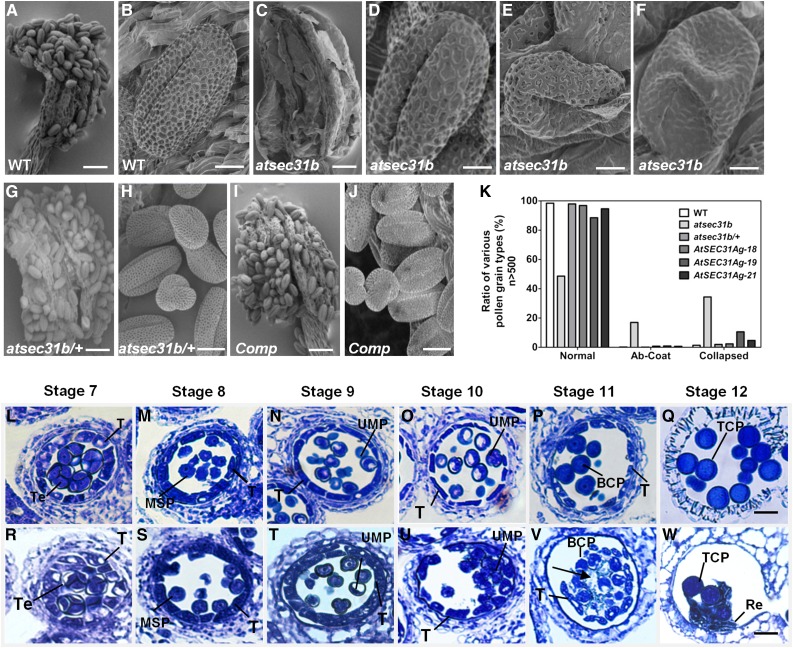Figure 2.
The atsec31b mutant exhibits defective microspore development. A to J, SEM observation of mature pollen grains and dehiscent anthers. A and C, Wild-type (WT) anther (A) contained numerous pollen grains, whereas most atsec31b pollen grains degenerated (C). B, Wild-type pollen grains with a regular reticulate exine pattern. D to F, Three types of pollen grains from the anthers of atsec31b plants: normal pollen grains (D), plump pollen grains with defective pollen wall (E), and collapsed pollen grains (F). G and H, The atsec31b/+ plants showed abundant and normal pollen grains, respectively. I and J, ProAtSEC31B:AtSEC31Bg/atsec31b could complement the defective pollen development in atsec31b mutant plants. Comp, Complementary plants. For A, C, G, and I, bars = 50 μm; for B, D, E, and F, bars = 5 μm; and for H and J, bars = 10 μm. K, Statistical analysis of the three types of pollen grains shown in D to F. Ab-Coat, Pollen grains with an abnormal coat; Collapsed, collapsed pollen grains without a typical exine. L to W, Locules from anther sections of wild-type (L–Q) and atsec31b (R–W) plants are shown from anther stages 7 to 12. The black arrow in V indicates abnormal structures surrounding the microspores. BCP, Bicellular pollen; MSP, microspores; Re, remnants; T, tapetum; TCP, tricellular pollen; Te, tetrad; UMP, uninuclear microspore. Bars = 20 μm.

